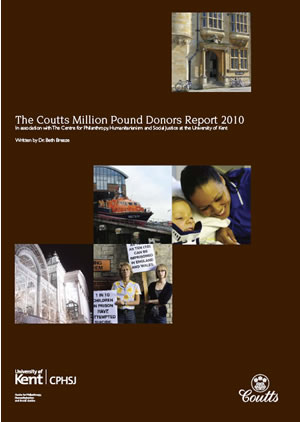How can philanthropists take more risks in their giving?
Philanthropists just don’t take enough risks in their charitable giving – calculated risks that, if successful, could lead to even greater impact.
That was one of the conclusions of the 2011 Bellagio Initiative Summit, according to Professor Jen Shang, who this morning has taken up the issue at Revolutionise’s second Annual Lectures in London.
Professor Shang, Director of Research at the Centre for Sustainable Philanthropy at Plymouth Business School, has shared her latest findings with the delegates at the Royal Institution. She has looked at how philanthropists can be helped to do more, and how they can approach this rationally and emotionally.
Her research involved interviewing 22 philanthropists from around the world who support international development. In these conversations they were encouraged to reflect on the decisions they had made in their charitable support and their thought process. They were encouraged to work through the areas and issues that they had to overcome in the process of deciding to give and what to support.
Five-step process to embracing risks in giving
This reflection on their whole approach to philanthropy was a struggle for most of the philanthropists. To help them, Professor Shang developed a five-step process.
1. Define risk: the philanthropists were invited to define what ‘impact risk’ and ‘operational risk’ entailed.
2. Assess the degree of risk. This assessment was expected to – and did – change during the process.
3. Recognise the pivotal moment in recognising this change in definition or assessment.
4. Cope with the negative emotions that are inevitable in think through the steps to making this change.
5. Optimise the value that life experience offers their philanthropy.
Of course, the process can be iterative, if philanthropy is to continue to be refined and improved.
What are the biggest challenges that philanthropy will face in the next decade? #AnnualLectures pic.twitter.com/ZpqzEJfKQT
Advertisement
— Revolutionise (@RevolutioniseWe) December 4, 2014
Inherited or earned wealth
Professor Shang told the Annual Lectures audience that she had found no difference in the reactions from philanthropists to this process, whether they were young or old, or had earned their wealth or inherited it.
What does make a difference is the journey each philanthropist makes or has to make to complete this process. Some have been living the life of philanthropy through their family foundation for 10 or 20 years. Others have come to giving more recently, or have taken to philanthropy in smaller bites. The latter might experience less turbulence in being invited to rethink their approach to philanthropy.
Next stage
Professor Shang said that more research was needed to see how these new views actually played out in the philanthropists’ activities and subsequent charitable giving.
What can fundraisers learn from this research? They need to understand the degree to which philanthropists have to invest their life when taking this journey of rethinking their philanthropy. It is very hard to have one’s sometimes long-held ideals of ‘doing good’ challenged. The five-stage approach can also give fundraisers a sense of how major donors are thinking about their giving and adapting it.
You can download a copy of Professor Shang and Professor Adrian Sargeant’s paper on Risk and Philanthropy: Systemisation, Education and Professionalisation (2011) and a copy of Professor Shang’s presentation on her latest research on Risk and Philanthropy.




